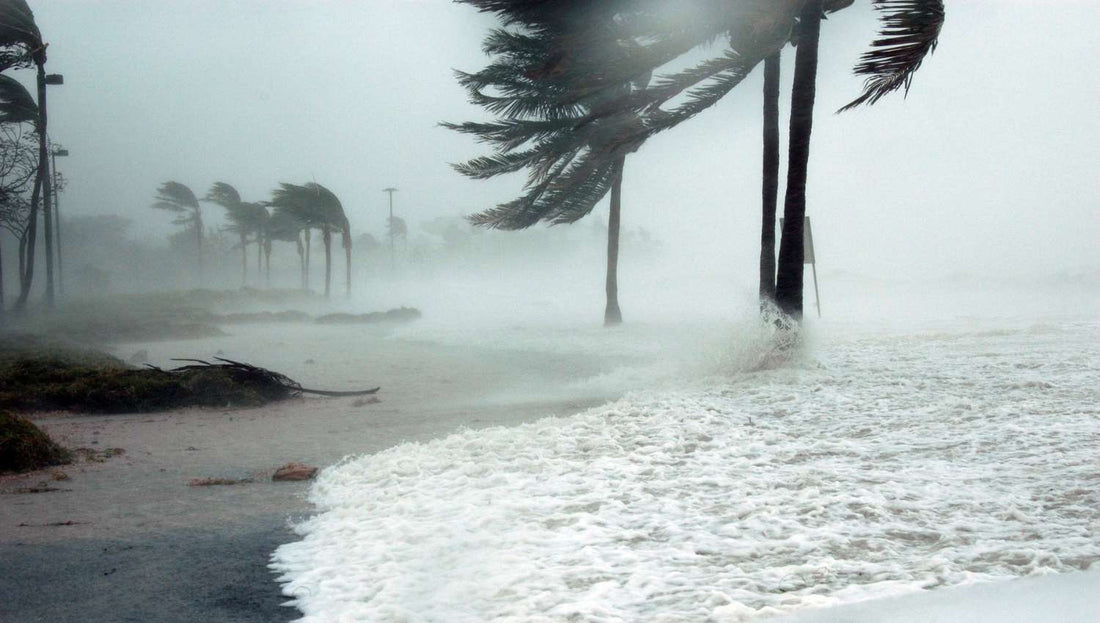
The biggest storms in history: between fascination and devastation
The sea has always been a source of fascination and mystery. For lovers of the sea and its treasures , storms are natural phenomena that are as impressive as they are terrifying . In this article, we will explore the biggest storms ever recorded, the figures that characterize them and the consequences on populations and marine ecosystems .
Characteristics of storms
The formation of storms
Storms form when warm , moist air rises and meets cold air aloft. Several factors can influence the formation and intensity of storms, such as sea surface temperature, atmospheric currents and local weather conditions.
The different types of storms
There are several types of storms, each with their own characteristics and consequences. Among the best known are hurricanes , typhoons and cyclones , which are large tropical storms. Extratropical storms, on the other hand, form outside tropical areas and are generally less intense.
The different types of storms
Hurricanes, typhoons and cyclones: formidable tropical storms
Hurricanes , typhoons , and cyclones are tropical storms that typically form over the warm waters of tropical oceans. Although they have different names depending on the region where they form, these weather phenomena are essentially the same. Hurricanes form in the North Atlantic and Northeast Pacific , typhoons in the Northwest Pacific, and cyclones in the Indian Ocean and South Pacific.
These storms are characterized by strong winds that revolve around a center of low pressure, called the " eye " of the storm. The intensity of these storms is often measured by the Saffir-Simpson scale, which classifies hurricanes into five categories based on the speed of their winds. Category 5 storms, the most intense, have winds of 252 km/h (157 mph) or more.
Extratropical storms and winter storms
Extratropical storms typically form in areas outside the tropics, such as mid- and high latitudes. Unlike tropical storms, they are fueled by temperature contrasts between warm and cold air masses. Extratropical storms can generate strong winds , heavy precipitation, and sometimes snow, depending on the season and latitude.
Winter storms , on the other hand, typically occur during the coldest months of the year. They may be accompanied by strong winds, snow, freezing rain and sleet. These storms can cause significant disruptions, particularly in terms of transport, electricity and heating.
The biggest storms in history
Cyclone Bhola (1970)
Cyclone Bhola is one of the deadliest storms in history. It struck East Pakistan (now Bangladesh) and India in November 1970, killing between 300,000 and 500,000 people. The cyclone, a Category 3, had sustained winds of 185 km/h (115 mph) and caused a storm surge that submerged low-lying coastal areas. The tragedy was exacerbated by the lack of adequate warning and evacuation systems at the time.
Hurricane Andrew (1992)
Hurricane Andrew is one of the costliest hurricanes in United States history. It struck Florida and Louisiana in August 1992, causing property damage estimated at $27 billion (in 1992 dollars). Hurricane Andrew was a Category 5, with sustained winds of 265 km/h (165 mph) and gusts up to 295 km/h (185 mph). The storm destroyed more than 25,000 homes and damaged 100,000 more, leaving an estimated 250,000 people homeless in Florida .
Hurricane Katrina (2005)
Hurricane Katrina is one of the most devastating storms in United States history. It struck the Gulf Coast in August 2005, with sustained winds of 280 km/h (175 mph). The city of New Orleans was particularly hard hit, with massive flooding caused by breached levees. More than 1,800 people are estimated to have died and property damage totaled approximately $125 billion.
Cyclone Nargis (2008)
Cyclone Nargis struck Burma (now Myanmar) in May 2008, killing at least 138,000 people and affecting 2.4 million people. The cyclone, a Category 4, had sustained winds of 215 km/h (135 mph) and caused a storm surge more than 4 meters (13 feet) high, flooding coastal regions and farmland. Relief efforts were hampered by destroyed infrastructure and political restrictions by the Burmese government at the time.
Hurricane Sandy (2012)
Hurricane Sandy , nicknamed "Superstorm Sandy" due to its size and impact, struck the eastern seaboard of the United States in October 2012. Although it was downgraded to an extratropical storm before reaching the coast, Sandy caused extensive damage, with flooding, power outages and the destruction of homes and infrastructure. Property damage was estimated at $70 billion, making Sandy the second costliest storm in U.S. history, after Hurricane Katrina. At least 233 people have lost their lives in several countries, including the United States, Canada and the Caribbean.
Super Typhoon Haiyan (2013)
Super Typhoon Haiyan , also known as Yolanda in the Philippines, is one of the most powerful storms on record. With sustained winds of 315 km/h (196 mph) and gusts reaching 380 km/h (235 mph), it caused enormous damage in the Philippines in November 2013. It is estimated that nearly 6,300 people lost their lives. lives and more than 4 million have been displaced.

The impact of storms on the environment and populations
Ecological consequences
Storms can have serious consequences on marine and coastal ecosystems. For example, they can cause beach and coastal erosion , destruction of marine habitats and disruption of food chains . Additionally, storms can cause the dispersal of invasive species, which can disrupt the ecological balance of affected areas.
The human consequences
In addition to loss of life and property damage , storms can have many other impacts on populations. Floods and landslides caused by storms can lead to the destruction of homes, infrastructure and agricultural land . Storms can also cause power and communications outages, making rescue and coordination of rescue efforts more difficult. Populations displaced by storms may also face health problems, such as the spread of disease and lack of access to clean water and food.
Storm prevention and preparation
Warning and monitoring systems
To better anticipate and manage storms, governments and meteorological organizations have warning and monitoring systems. These systems make it possible to track the movements of storms and issue alerts to the populations concerned. With this information, authorities can put evacuation and relief plans in place.
Prevention and protection measures
To limit the impacts of storms, it is essential to put in place prevention and protection measures. These include the construction of dikes and dams to protect coastal areas, the relocation of populations and infrastructure to less exposed areas, or the implementation of emergency plans to facilitate evacuations and rescue operations. relief.
Storms and climate change
The impact of global warming on the frequency and intensity of storms
Global warming , caused by human activities and increased greenhouse gas emissions, could have consequences on the frequency and intensity of storms. Tropical storms gain energy from the heat of the ocean, and higher sea surface temperatures could potentially result in more powerful storms.
Scientists agree that extreme storms could become more frequent and intense as the climate warms. However, it is difficult to accurately predict how storms will evolve in the future because climate models are still improving and many factors influence storm formation.
Climate change adaptation and mitigation to reduce storm impacts
Faced with the challenges posed by climate change and storms, it is crucial to put in place adaptation and mitigation strategies. Adaptation aims to reduce the vulnerability of populations and ecosystems to the impacts of storms, while mitigation seeks to reduce greenhouse gas emissions to limit global warming .
Adaptation measures include building dikes and flood protection walls, relocating populations and infrastructure to less exposed areas, and improving early warning systems. In addition, it is important to strengthen the resilience capacities of communities, for example by developing evacuation and relief plans, improving water resources management and promoting economic diversification.
Regarding mitigation, it is essential to reduce greenhouse gas emissions, notably by favoring renewable energy, improving energy efficiency and promoting sustainable modes of transport and production. Climate change mitigation efforts will not only help limit rising temperatures and impacts from storms, but also preserve ecosystems and natural resources essential to our survival and well-being.
Conclusion on the biggest storms in history
Storms are impressive natural phenomena that have marked history and will continue to do so. They remind us of the power of nature and the need to respect and protect our environment. Faced with the challenges posed by climate change and increasingly frequent and intense storms, it is crucial to better understand these phenomena, to invest in warning and monitoring systems, and to put in place mitigation measures. adaptation and mitigation to protect vulnerable populations and ecosystems.
As passionate about the sea and its mysteries , we must also play our part by adopting environmentally friendly behaviors and supporting efforts to preserve our planet for future generations. Whether by reducing our energy consumption, supporting ocean protection initiatives or raising awareness of these issues, each of us can contribute to building a more sustainable and resilient world in the face of storms and climate challenges. .



































